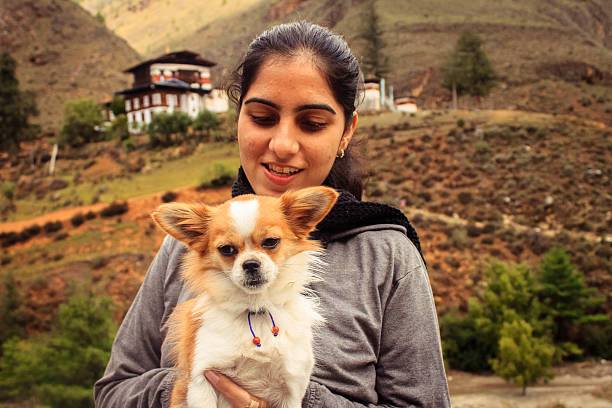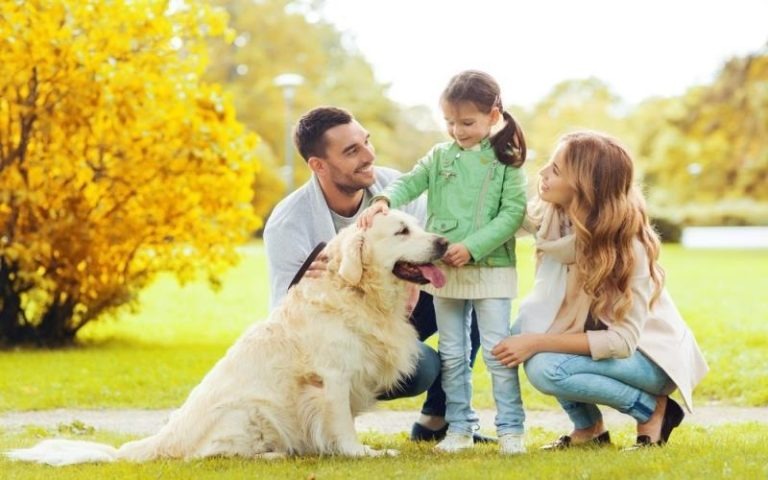
Traveling with Your Feathered or Furry Friend: The Ultimate Guide to Safe Travels with Birds and Small Pets
This guide provides expert tips, techniques, and must-know information on how to ensure your bird or small pet is safe, comfortable, and stress-free during your travels, whether short or long distance.
🐶 Pet Star
50 min read · 13, Apr 2025

Introduction: Why Safe Travel is Important for Birds and Small Pets
Traveling with a bird, hamster, rabbit, or any other small pet can be an exciting and enriching experience for both you and your furry or feathered companion. Whether you are going on a weekend trip, taking a vacation, or moving to a new home, ensuring that your pet is safe, comfortable, and stress-free during the journey is crucial.
Pets, particularly birds and small animals, experience stress and discomfort from changes in their environment. Traveling can make them feel vulnerable or disoriented, especially when it involves new sounds, smells, and surroundings. However, with the right preparation, appropriate tools, and a little patience, you can ensure that your pet is not only safe but also as relaxed as possible during the trip.
In this comprehensive guide, we will cover everything from pre-trip preparations to travel essentials, in-transit care, and post-arrival adjustment tips. Whether you're flying, driving, or taking a long-distance train ride, these tips will help you plan a smooth journey for your small pet.
Planning Ahead: Pre-Trip Preparations for Your Pet
Before you embark on your journey, the first and most important step is to plan. Preparation is key to reducing stress and ensuring a safe and comfortable trip for your bird or small pet. Let’s go over some essential pre-trip steps that will help you set up your pet for a stress-free travel experience.
Visit the Vet for a Pre-Travel Check-Up
A pre-trip vet visit is a must. Even if your pet seems perfectly healthy, it’s always a good idea to get a check-up to ensure they’re fit for travel. This is especially important for birds, small mammals like rabbits, and pets with existing health issues. Your vet can:
- Assess Your Pet’s Health: Check for any medical issues that could be aggravated by travel, such as respiratory problems in birds or dehydration in rabbits.
- Ensure Vaccinations Are Up-to-Date: Some destinations, particularly international ones, may require proof of vaccinations. Your vet can provide any necessary documentation and give you advice on whether your pet needs additional vaccines.
- Provide Sedation or Anti-Stress Tips: For pets that are particularly anxious, your vet might recommend mild sedatives or calming techniques to reduce travel stress.
Select the Right Travel Carrier
Choosing the right carrier is crucial to keeping your pet safe and comfortable during the trip. The carrier should be the appropriate size for your pet and made of secure, breathable material to allow for air circulation.
- For Birds: Opt for a travel cage that is spacious enough for your bird to stand and move around comfortably. It should have sturdy locks to prevent escapes and offer easy access for feeding and watering.
- For Small Mammals: If you're traveling with a hamster, guinea pig, rabbit, or similar small pet, make sure the carrier is made from durable, well-ventilated material. It should have a solid base to prevent movement and provide stability during travel.
In addition, you may want to include soft bedding or towels to make the journey more comfortable for your pet. For birds, providing a perch inside the carrier is essential.
Prepare Your Pet’s Travel Essentials
Packing a travel kit for your pet is equally important as packing for yourself. Here’s what you’ll need:
- Food and Water: Carry enough food to last the entire trip, plus some extra in case of delays. For birds, ensure you bring their regular diet or any treats they enjoy. Small mammals need fresh hay, pellets, or vegetables to nibble on.
- Medication: If your pet is on any medications, don’t forget to pack them along with instructions from your vet. Include a first aid kit for emergencies.
- Comfort Items: Familiar items like your pet’s favorite blanket, toy, or a piece of your clothing can help calm them down by providing a sense of comfort and security.
- Cleaning Supplies: Accidents can happen during travel. Having pet-safe wipes, extra bedding, and waste bags is essential for cleaning up and keeping your pet’s carrier fresh.
Traveling by Car: Tips for Safe Road Trips
Car travel is often the most convenient and comfortable way to travel with birds and small pets. However, there are a few things you should keep in mind to make the journey as smooth as possible.
Ensure Safety and Comfort in the Car
- Seatbelt for Pets: Never let your pet roam free in the car. A travel carrier with a seatbelt attachment or one that fits securely on the floor is essential to ensure their safety.
- Temperature Control: Keep your car at a comfortable temperature. Birds and small pets are highly sensitive to heat, so never leave them in a hot car, even for a short time. Also, make sure the car isn’t too cold.
- Frequent Stops: On long road trips, plan for regular stops to give your pet a chance to stretch their legs, eat, drink, and use the bathroom. Make sure your pet is secure during these breaks to prevent accidents.
- Avoid Feeding Right Before the Trip: To prevent nausea or discomfort, avoid feeding your pet right before the trip. Instead, feed them a few hours before departure.
Keep Your Pet Occupied and Calm
The constant motion of a car ride can stress your pet, so provide them with comfort items and keep the environment quiet. Consider bringing along their favorite blanket or toy, as this can provide emotional support during the journey.
Flying with Birds and Small Pets: Airline Regulations and Safety Tips
Flying with a pet can be more challenging due to airline restrictions, security checks, and the long duration of the journey. However, with proper planning, it’s possible to travel with your pet by air without incident.
Understand Airline Policies for Pet Travel
Before booking your flight, research the airline’s pet policies. Many airlines allow small pets in the cabin, but there are specific regulations you’ll need to follow, including:
- Pet Carrier Requirements: Airlines usually require that pets be transported in an airline-approved carrier. Make sure your pet’s carrier fits within the airline’s guidelines and is ventilated for air circulation.
- Check with the Airline for Health Certificates: Some airlines require a health certificate for pets traveling in the cabin. This certificate is typically issued by your veterinarian and confirms that your pet is healthy enough for air travel.
Prepare for Security Checks
When passing through security, you will need to remove your pet from their carrier and carry them through the metal detector while the carrier goes through the scanner. Be sure to have a secure leash or harness on your bird or small pet so they don’t escape.
It’s a good idea to practice this process ahead of time so your pet doesn’t feel overly stressed by the situation.
In-Flight Care
During the flight, keep an eye on your pet. If they are nervous, you may want to cover their carrier with a light cloth to reduce visual stimulation. Keep them hydrated and offer a small treat to help them stay calm.
If you’re traveling internationally, remember that you may need to adhere to customs and quarantine regulations in your destination country, so be sure to check ahead.
Post-Arrival: Helping Your Pet Adjust to New Environments
Once you’ve arrived at your destination, your pet may need some time to adjust to the new surroundings. This adjustment period can be particularly stressful for birds and small pets who thrive on routine. Here’s how to help them settle in:
Re-establish Routines
- Feed Them on Schedule: Birds and small pets feel more secure when they are fed on time, as it brings a sense of normalcy to their day.
- Create a Safe, Quiet Space: Set up a comfortable area for your pet to relax in. This could be a quiet room or corner with their carrier, food, water, and bedding.
Monitor Your Pet’s Behavior
After travel, monitor your pet for signs of stress, such as changes in eating habits, lethargy, or behavioral issues. If your pet appears ill or overly stressed, consult a veterinarian to ensure there are no underlying health issues caused by the travel.
Reducing Travel Anxiety in Birds and Small Pets
Traveling can be a stressful experience for birds, hamsters, rabbits, guinea pigs, and other small pets. They may experience anxiety due to changes in their environment, unfamiliar sights, sounds, and smells, as well as physical discomfort from being confined for long periods. Here are some strategies to help reduce anxiety during the journey:
Familiarize Your Pet with the Carrier
One of the best ways to reduce anxiety during travel is to familiarize your pet with the carrier before the trip. Allow your bird or small pet to explore the carrier in a safe, relaxed environment. Place their favorite toys, bedding, or treats inside the carrier so that they associate it with positive experiences. For birds, you might even consider placing them in the carrier for short periods leading up to the trip to get them used to being inside it.
Create a Calm Environment
For pets like birds, environmental stimulation can be overwhelming during travel. If possible, create a calming environment by covering the carrier with a soft cloth to block out excessive movement and noise. You can also place calming scents, such as lavender or chamomile (in small amounts), around the carrier. For rabbits or rodents, consider providing them with soft bedding that smells familiar to help them relax.
Use Calming Products
There are various calming products available that are designed for pets traveling long distances. For example, calming sprays or wipes containing pheromones can be sprayed on bedding or inside the carrier. These products work by mimicking the calming pheromones that pets naturally release in stressful situations. Alternatively, herbal remedies like valerian root or melatonin might help in calming down your pet during travel. However, always consult your veterinarian before using any new calming products.
Considerations for Long-Distance Travel
Long-distance travel adds a layer of complexity when traveling with birds or small pets. Whether you're traveling cross-country or internationally, there are several factors you need to consider to make the journey as comfortable as possible for your pet.
Traveling by Train or Bus
While less common than car or air travel, taking a train or bus with a pet can still be a viable option. Many train and bus companies allow pets onboard, but they have specific regulations regarding the size of the pet, whether they must be in a carrier, and the type of carrier required. Be sure to check the policies of the transport company ahead of time.
- Train Travel: In some countries, train travel can be a comfortable and pet-friendly alternative. If traveling by train, ensure your pet is well-secured in their carrier and that the space they will occupy is large enough for them to move around slightly. Additionally, bring extra food, water, and comfort items for long journeys.
- Bus Travel: Bus travel is generally less comfortable for small pets due to the lack of space and unpredictable temperature changes. If you must travel by bus, choose a direct route to reduce the travel time, and ensure that your pet remains in their carrier for safety during the entire journey.
Adjusting to Jet Lag
If you're flying internationally or on long-haul flights, jet lag can affect both you and your pet. For birds, who are highly sensitive to changes in time zones and environmental cues, jet lag can cause confusion and stress. To mitigate the effects of jet lag:
- Keep a Consistent Feeding Schedule: During long flights, try to stick to your pet’s usual feeding schedule as much as possible, even if you’re changing time zones. Offering food at the right times can help regulate their internal clock.
- Hydration Is Key: During long flights, dehydration is a significant concern for both you and your pet. Ensure your bird or small pet has access to clean water throughout the journey. Dehydration can worsen the effects of jet lag and cause additional stress on your pet’s body.
Flying Internationally with a Bird or Small Pet
Flying internationally adds a layer of complexity due to customs regulations, vaccinations, quarantine procedures, and different pet laws across countries. It’s crucial to prepare well in advance for an international journey with your pet.
Understand the Import and Export Regulations
Each country has its own set of regulations regarding the import and export of pets, including specific health certifications, vaccination requirements, and quarantine policies. Some countries may require a rabies vaccination or a veterinary certificate confirming that your pet is disease-free before they can enter. Before making travel plans, thoroughly research the regulations for both the country you're departing from and the one you're entering.
Prepare for Quarantine
Some countries, especially those with strict biosecurity laws like Australia or New Zealand, may require pets to undergo quarantine upon arrival. While this process can be stressful for both pets and their owners, ensuring that your pet is healthy and properly prepared for quarantine can help minimize any negative impact.
Check Airline Restrictions for International Travel
International flights often have different rules regarding pet travel, and some airlines may restrict certain animals, especially birds. Many airlines will only allow small pets to travel in the cabin, while larger animals must be transported in the cargo hold. Be sure to verify the airline’s international pet travel policies ahead of time.
Post-Travel: Helping Your Pet Settle Into a New Environment
Once you have reached your destination, it’s time to help your pet adjust to their new surroundings. The journey may have been long and stressful, so it’s important to provide them with a safe and comforting space as they recover.
Provide a Quiet Space for Your Pet
Upon arrival, ensure that your pet has a quiet, secure place to rest. Place their carrier in a calm and secluded spot with limited foot traffic. You can leave the carrier door open or allow your pet to explore their new environment once they feel comfortable.
- For Birds: If traveling with a bird, ensure that their cage is set up in a quiet area where they can settle. You can also offer them a favorite perch or toy to help them feel at home.
- For Small Mammals: Allow your small pet to explore their new space slowly. Start by keeping them in their carrier or a designated area for a few hours so they can adjust.
Re-establish Routines as Soon as Possible
Pets feel more secure when their routines are re-established. Feed them at the same time, keep them on a regular sleep schedule, and provide familiar items that smell like home. Over time, they will become more comfortable in their new environment, which can help reduce anxiety.
Conclusion
Traveling with a bird or small pet doesn’t have to be a stressful ordeal. With the right preparation, attention to detail, and an understanding of your pet’s unique needs, you can make the journey enjoyable and safe for both of you. Whether you're driving across town, flying across the country, or traveling internationally, taking the time to plan ahead can ensure that your pet stays comfortable, calm, and healthy during the trip.
From selecting the right travel carrier and packing essential items to familiarizing your pet with the travel environment and taking steps to reduce stress, every small action you take contributes to a smoother experience. Remember, consistency in routines and providing comfort items will help alleviate anxiety and make your pet feel at ease. Additionally, understanding the regulations for pet travel, especially internationally, ensures that there are no surprises when it comes to health certificates, vaccinations, or quarantine requirements. Traveling with pets, especially birds and small animals, requires some extra effort, but the bond it fosters and the joy of sharing the adventure is invaluable. So, next time you plan a trip, whether for work or leisure, take the time to care for your pet’s needs, ensuring their comfort and safety as you embark on the journey together.
Q&A
Q: What are the best travel carriers for birds and small pets?
A: The best carriers for birds and small pets should be sturdy, spacious, and well-ventilated. For birds, look for a travel cage with secure locks and perches. Small mammals need a secure carrier with a solid base and plenty of ventilation.
Q: How do I help my bird adjust to travel?
A: Familiarize your bird with the carrier by placing them inside for short periods before the trip. Offer them comfort items like toys or familiar bedding to help reduce anxiety during travel.
Q: Can I travel with my hamster or guinea pig in a car?
A: Yes, but ensure their carrier is secure in the car and provide a stable, comfortable environment. Avoid placing the carrier in direct sunlight and maintain a consistent temperature.
Q: Should I feed my pet before a long trip?
A: It’s best to feed your pet a few hours before departure to prevent nausea or discomfort during travel, especially for birds and small mammals.
Q: How often should I stop during a long road trip with a small pet?
A: Plan to stop every 2-3 hours to allow your pet to rest, drink water, and use the bathroom. This is especially important for rabbits, guinea pigs, and other small mammals.
Q: Can I give my bird or small pet calming medication for travel?
A: Consult your vet before using calming medications. Some pets may benefit from mild sedatives or calming sprays, but it’s important to ensure they are safe for your pet’s specific needs.
Q: How do I deal with my pet’s anxiety during travel?
A: Reduce anxiety by maintaining familiar routines, using calming products, and providing comfort items like toys or blankets. Keeping the carrier covered and offering frequent breaks can also help.
Q: What should I do if my pet gets sick during travel?
A: If your pet shows signs of illness, contact a veterinarian as soon as possible. Carry any necessary medications, and keep a first-aid kit on hand for minor issues.
Q: How do I prepare for international travel with my pet?
A: Research the pet import/export regulations for your destination, including required vaccinations, health certificates, and quarantine requirements. Contact your vet for specific advice and to ensure your pet is ready for international travel.
Q: Can I bring my pet in the cabin during a flight?
A: Many airlines allow small pets in the cabin, provided they are in an airline-approved carrier. Check with your airline for their specific rules and carrier size requirements before booking your flight.
Similar Articles
Find more relatable content in similar Articles

Pets and Mental Health: The Science Behind Emotional H..
Discover the profound impact o.. Read More

The Growing Trend of Therapy and Emotional Support Ani..
Exploring the remarkable rise .. Read More

How Climate Change Affects Wild and Domestic Animals...
Climate change is dramatically.. Read More

How Pets Strengthen Family Bonds...
Pets are more than just compan.. Read More
Explore Other Categories
© 2024 Copyrights by rPets. All Rights Reserved.